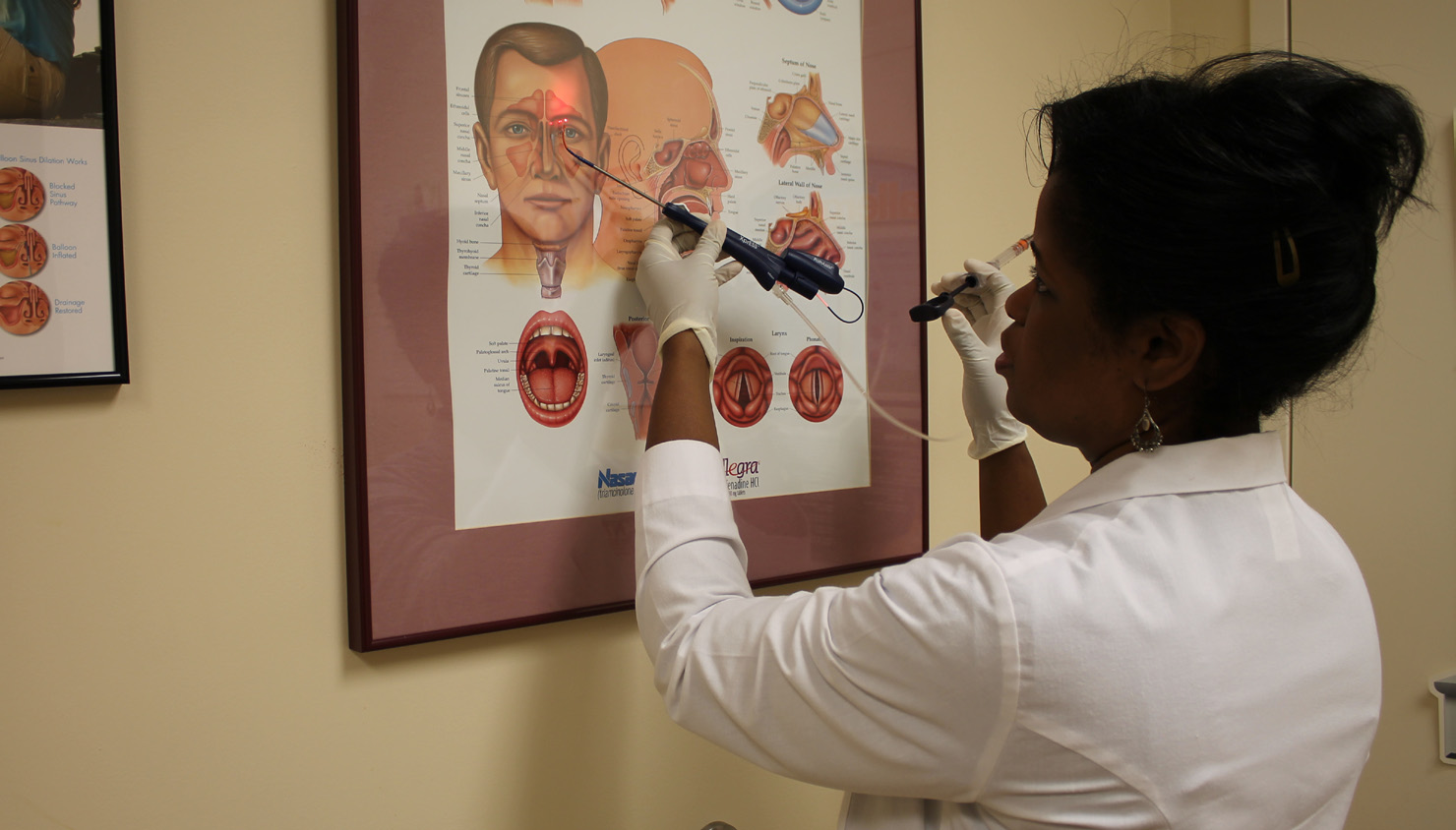Balloon sinus dilation improves life for sinusitis sufferers

Dr. Andrea Williams demonstrates the balloon sinus dilation procedure.
A new procedure is paving the way for patients to have their sinuses corrected long term in just 30 minutes and without leaving their physician’s office.
Doctors are considering the balloon sinus dilation procedure to be a breakthrough in the way physicians treat patients with chronic sinusitis. The “minimally-invasive” procedure, which mimics the balloon angioplasty procedure cardiologists use to open heart valves, re-opens the sinus drainage pathways, virtually bringing immediate relief to patients suffering from recurrent and persistent sinusitis, according to a news release.
Dr. Andrea Williams, of Ear Nose Throat & Audiology Associates of the Carolinas, said sinus surgeries traditionally were performed externally on the face before an endoscopic method was developed, which allowed physicians to perform the surgery internally. The balloon sinus dilation procedure became FDA-approved in 2005, and Williams used the method along with the endoscopic sinus procedure until about a year ago.
“Initially when we were doing endoscopic surgery, for the frontal sinus or the sphenoid sinus you could use the balloon to help you locate the sinus and then dilate and still cut away the tissue,” Williams said. “We’re realizing that the balloon alone, by dilating the opening and micro-fracturing the bone, that creates a permanent opening, that there’s no need to do additional cutting.”
There are still some instances when traditional surgical methods are necessary, with the most common being when polyps are present and need to be removed. However, the majority of patients who require sinus surgery can have their problems corrected with the balloon procedure.
“We now have enough studies that have proven that the balloon sinus dilation is just as effective as the traditional endoscopic surgery, so there’s no need to combine them anymore,” Williams said.
People with chronic sinus problems – four or more sinusitis infections per year, diseases in multiple sinuses or those who don’t respond to antibiotics or nasal sprays – are candidates for balloon sinus dilation. The procedure is performed in office with local anesthetic and often a light sedative, such as valium, and takes about 30 minutes to complete.
Williams said the pain, discomfort or bleeding patients experience after the surgery typically is minimal, especially when compared to previous methods of sinus surgery, and people typically recover within a day or two.
One of the perks of balloon sinus dilation, Williams said, is it allows her to perform more surgeries per week in her south Charlotte office, due to the quickness of the work. She’s also able to help more patients because there are fewer risks associated with the procedure than with other sinus surgeries, particularly because it doesn’t require general anesthesia.
“I’ve had patients in their 80s and 90s, and you’re really very hesitant to put that patient to sleep to do sinus surgery,” Williams said. “But I use the balloon sinus dilation to open up the sinus (without general anesthesia) … and those patients tolerate it well.”
The procedure also is more affordable for patients because they’re not paying for general anesthesia and because it’s performed in office as opposed to a hospital; thus, more people who require sinus surgery are enjoying a better quality of life.
“It just has opened a lot of doors to help patients deal with chronic sinusitis,” Williams said. “They don’t have to struggle anymore.”
In The News
Simple Procedure Ends Sinus Suffering
Reported by Maureen O'Boyle, WBTV
Procedure offers permanent relief for chronic sinus infections
Reported by Ben Thompson, WCNC
The Daily Two – Balloon Sinus Dilation
with Laura Palka, WSOCTV

